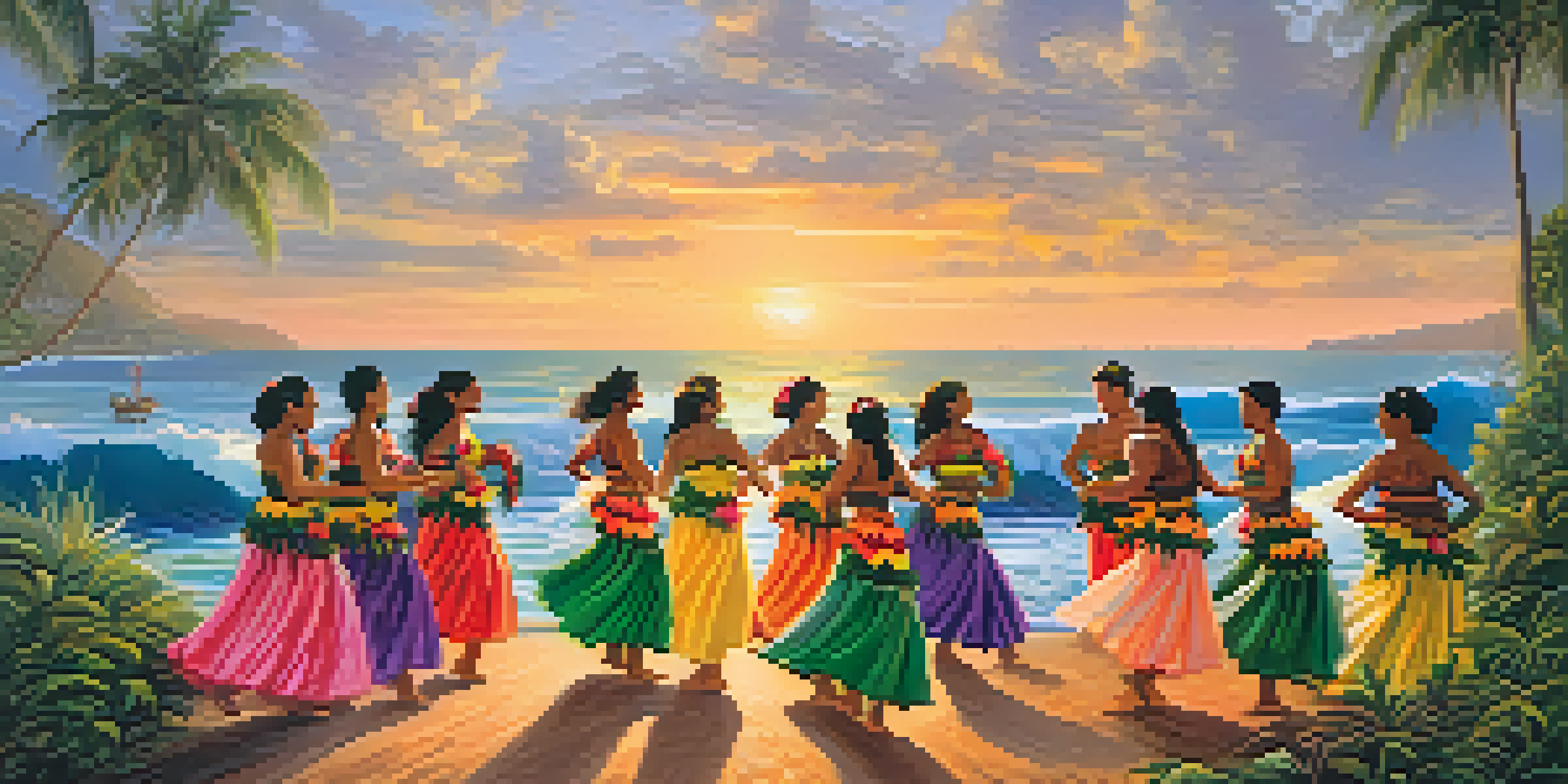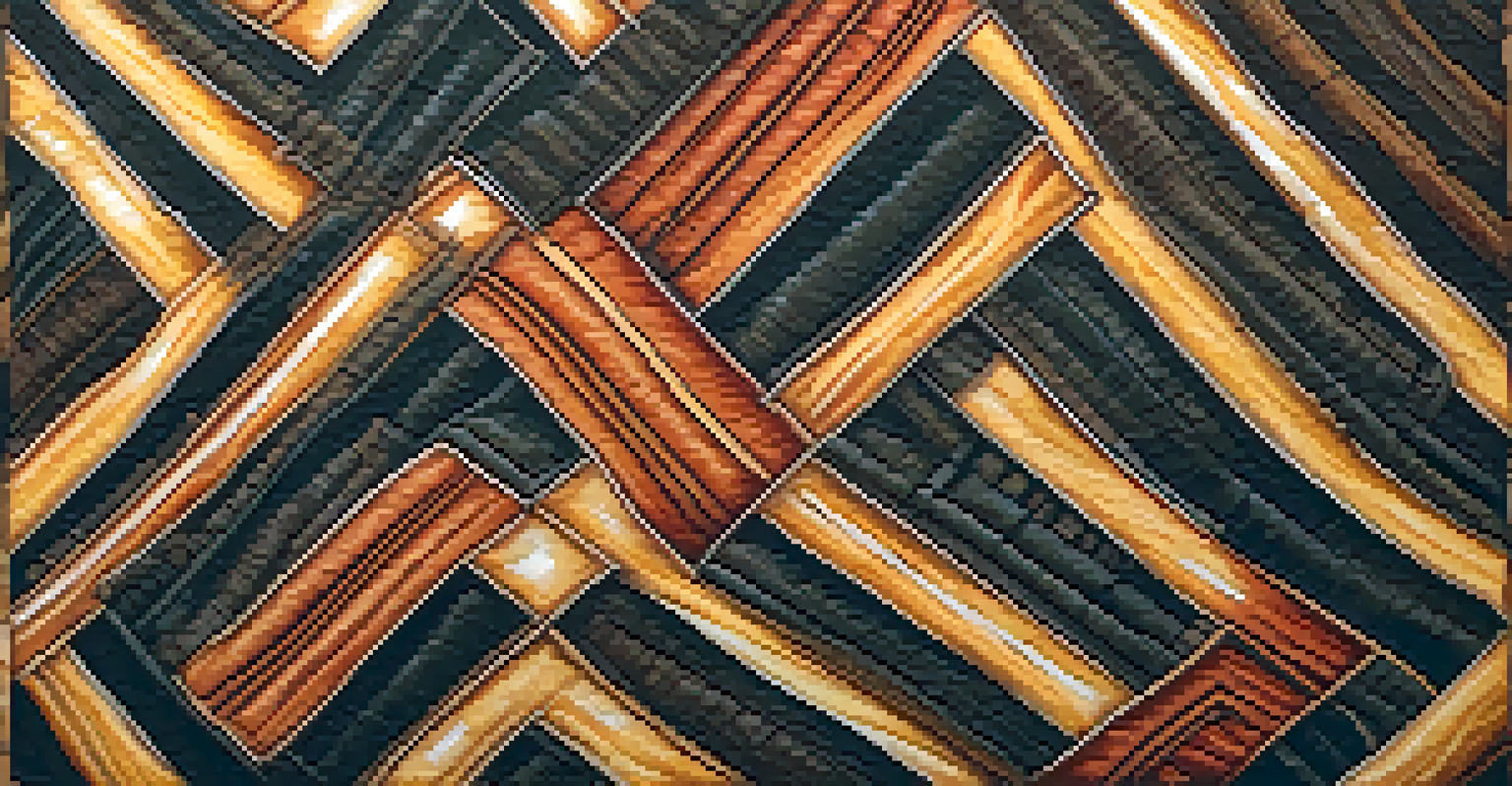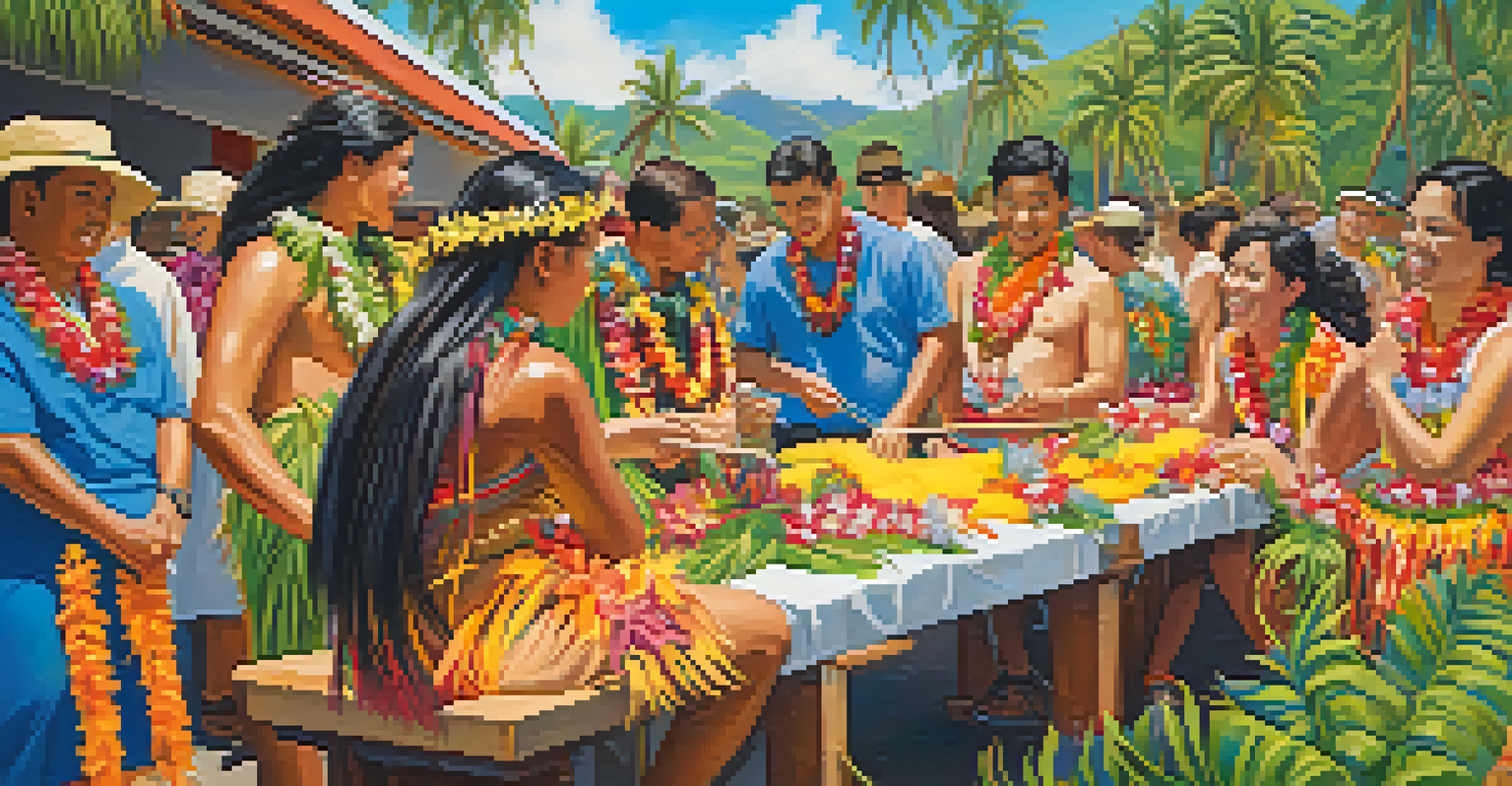Exploring the Rich Heritage of Hawaiian Arts and Crafts

The Significance of Hawaiian Arts in Culture
Hawaiian arts are deeply woven into the fabric of the islands' culture, reflecting their history and values. Each art form tells a story, whether it’s through hula, chants, or visual arts. These creative expressions serve as a bridge connecting generations, reminding us of the past while inspiring the future.
Art is the most beautiful of all lies.
Traditionally, art in Hawaii was not just for aesthetic pleasure; it was a means to communicate and preserve history. For instance, the intricate designs in kapa cloth, made from tree bark, often depict important myths and legends. This storytelling aspect makes Hawaiian arts a vital part of community identity.
Today, many artists continue to draw inspiration from their ancestors, blending ancient techniques with modern creativity. This fusion not only honors Hawaiian heritage but also allows for new interpretations that resonate with both locals and visitors alike.
Exploring Traditional Hawaiian Crafts
Traditional Hawaiian crafts such as lei making, featherwork, and carving showcase the ingenuity of the islands' people. Each craft is imbued with meaning, often linked to rituals or significant life events. For example, lei are not just beautiful adornments; they symbolize love and respect.

Featherwork, once reserved for royalty, highlights the skills of artisans who would meticulously create capes and helmets adorned with vibrant feathers. This craft not only required patience but also a deep understanding of native birds and their habitats. Today, it's a rare but cherished art form.
Hawaiian Arts Reflect Cultural Heritage
Hawaiian arts are vital expressions that connect past and present, preserving history through various forms such as hula, chants, and visual arts.
Carving, whether in wood or stone, reflects the connection to nature and spirituality. Artists carve intricate designs that represent ancestral gods or natural elements, making each piece a unique blend of creativity and cultural significance.
The Role of Hula in Hawaiian Arts
Hula is more than just a dance; it’s a powerful form of storytelling that embodies Hawaiian culture. Through its movements and chants, hula expresses the history, mythology, and values of the Hawaiian people. Each gesture carries meaning, making it a profound art form.
Culture is the widening of the mind and of the spirit.
There are two main styles of hula: Hula Kahiko, the ancient form, and Hula ‘Auana, which is more modern and incorporates contemporary music. Both styles serve to educate and entertain, allowing performers to connect with audiences on various levels.
Moreover, hula has gained international recognition, drawing visitors eager to learn about Hawaiian culture. This popularity helps preserve the tradition while allowing new generations to appreciate and participate in this beloved art form.
The Influence of Nature on Hawaiian Arts
Hawaii's stunning landscapes and rich biodiversity play a significant role in inspiring local arts and crafts. From the vibrant colors of the ocean to the intricate patterns of tropical flowers, nature serves as a canvas for creativity. Artists often reflect these elements in their work, making it a true representation of the islands.
Natural materials, like lava rock, wood, and shells, are frequently used in crafting. For instance, many traditional instruments, such as the ukulele, are made from local woods, creating a sound that is uniquely Hawaiian. This reliance on nature fosters a deep respect for the environment.
Nature Inspires Hawaiian Creativity
The stunning landscapes and biodiversity of Hawaii serve as a rich source of inspiration for local artists, influencing their work and materials.
Additionally, the changing seasons and natural phenomena inspire thematic elements within the arts. For example, the beauty of a sunset may be captured in a painting or the sound of rain could be mimicked in a chant, showcasing the harmonious relationship between the artists and their surroundings.
Modern Innovations in Hawaiian Arts
Today, Hawaiian arts are evolving as artists embrace new techniques and technologies. This modern approach does not erase tradition; instead, it enhances and revitalizes it. Many artists are experimenting with mixed media, digital art, and contemporary installations, pushing the boundaries of creativity.
Collaborations between traditional artisans and modern creators are becoming common, leading to exciting new works that reflect both heritage and innovation. These partnerships often result in unique pieces that celebrate the past while appealing to today’s audiences.
Exhibitions and art fairs showcasing contemporary Hawaiian art are also gaining traction, helping to elevate local artists. This visibility fosters a greater appreciation for the diversity of Hawaiian arts, encouraging both locals and tourists to engage with the culture in fresh and meaningful ways.
The Importance of Cultural Preservation
Preserving Hawaiian arts and crafts is crucial for maintaining cultural identity. As globalization continues to influence lifestyles, there is a risk of losing traditional practices. Efforts to educate the younger generation about their heritage play an essential role in sustaining these art forms.
Cultural organizations and community groups often host workshops and classes, ensuring that skills are passed down. These initiatives create a sense of pride among participants, as they learn about their roots while honing their craft. This not only enriches individual lives but also strengthens community bonds.
Cultural Preservation Through Education
Efforts to educate younger generations about traditional arts are crucial for maintaining cultural identity amidst globalization.
Moreover, the resurgence of interest in Hawaiian arts has prompted a greater appreciation among tourists. Visitors who engage with local artisans often leave with a deeper understanding of the culture, fostering a sense of respect that can contribute to cultural preservation efforts.
Celebrating Hawaiian Arts Through Festivals
Festivals celebrating Hawaiian arts and culture play a vital role in promoting community engagement and cultural pride. Events like the Merrie Monarch Festival showcase hula and traditional arts, attracting participants and spectators from around the world. These gatherings not only highlight the talent of local artists but also educate attendees about Hawaiian heritage.
Additionally, festivals often feature workshops, allowing people to get hands-on experience with traditional crafts. This interactive element encourages a deeper connection to the arts, making it more than just a visual experience. Participants leave with new skills and a richer appreciation for the culture.

Moreover, these festivals serve as a platform for artists to network and collaborate, fostering a thriving arts community. The sense of camaraderie and shared passion for Hawaiian culture creates an atmosphere of celebration that resonates beyond the event itself.